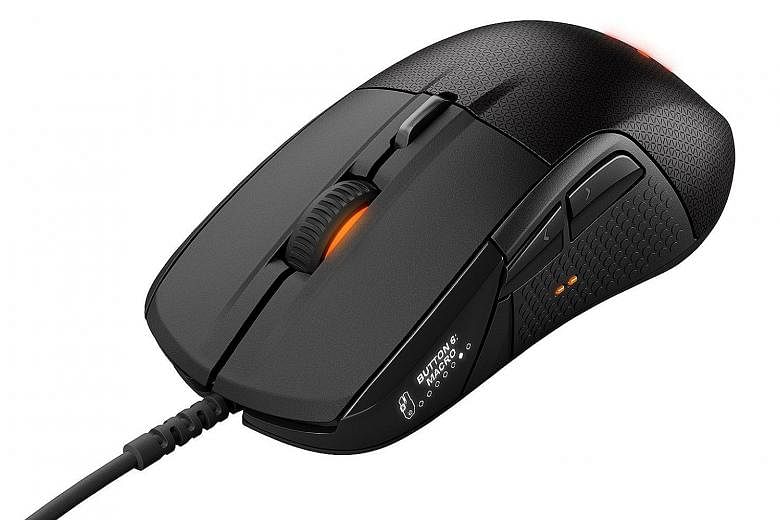The Steelseries Rival 700 is one of the most feature-packed mice to hit the market in years.
It boasts tactile feedback, an Oled display, and interchangeable cables, nameplates, top covers and sensors. On top of all this, it retails at a very reasonable $169, whereas many other flagship mice cost upwards of $200.
If you are looking for a solid gaming mouse, the Rival 700 should definitely be on your list.
The Rival 700 is the big brother of the Rival 300. While not quite identical, they have very similar shapes, textured rubber side grips and thumb buttons.
Where the Rival 700 pulls ahead is in the wide variety of options it offers. The mouse ships with two cables - braided and PVC - and right out of the box you have a choice. And that is just the start of the customisations available.
Users can change the patterned top cover for a glossy or matte textured one.
-
TECH SPECS
PRICE: Mouse $169; laser sensor module €29.99 (S$44.65); cover pack: €19.99 (S$29.76)
SENSOR: Optical sensor: 100 to 16,000 CPI and 50g acceleration; Laser sensor: 8,200 CPI and 30g acceleration
WEIGHT: 135g
CABLE LENGTH: 1m (non-braided); 2m (braided)
RATING
FEATURES: 5/5
DESIGN: 4/5
PERFORMANCE: 5/5
VALUE FOR MONEY: 5/5
OVERALL: 5/5
The nameplate on the back of the mouse can also be changed, although Steelseries does not sell new ones. Instead, it has put the nameplate's design online in a 3D-printable file, for intrepid gamers to customise and print their own plates.
Even the mouse's sensor can be swopped. By default, it comes with an optical sensor that can be removed by undoing four screws on the mouse's underside. This can be changed to a laser sensor.
Laser sensors usually offer higher DPI and can track on a wider variety of surfaces, from a farther distance. However, as compared with optical mice, they do have a greater tendency to run into acceleration issues at higher speeds.
While both cables come with the mouse, the top covers and laser sensor are sold separately.
The mouse also vibrates, like many console controllers do, providing tactile feedback to gamers. However, this feedback currently works with only three games: Dota 2, Minecraft, and Counter- Strike: Global Offensive.
I tried it out with Dota 2, where the Rival 700 can be set to constantly pulse once health drops below a certain level, vibrate when your character is stunned, or to mark other in-game events.
While it did not affect the accuracy of the mouse much - the mouse vibrates up-and-down rather than side-to-side - I found it more of a distraction than a help. Dota 2 and many other games already offer a myriad of visual and audio clues for gamers to follow, and adding mouse feedback into the mix was not particularly helpful.
The Oled on the left side of the mouse can also show in-game statistics, like your health bar.
Again, while it is a great option, I found myself never looking at my mouse while playing, so the feature is more cosmetic than anything else.
All this hardware packed into the mouse also makes it 135g - 15g heavier than the Rival 100 - which may be a little too heavy for some.
Lisabel Ting
•Verdict: The Rival 700 is a feature-packed modular mouse at a very reasonable price.


